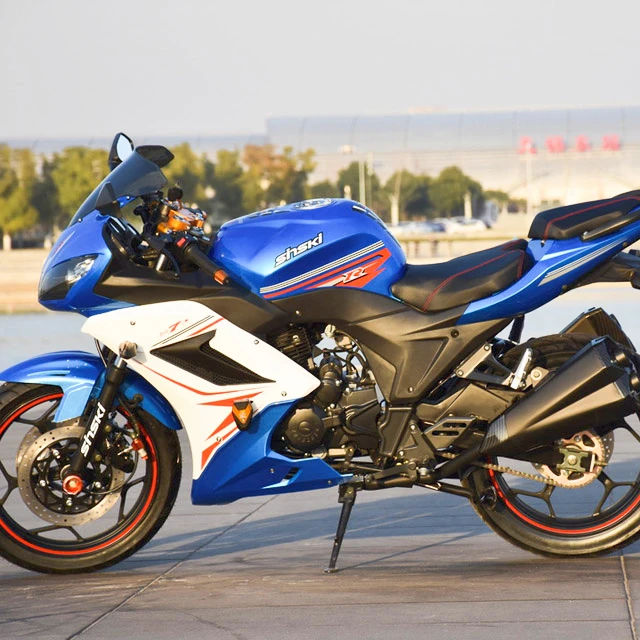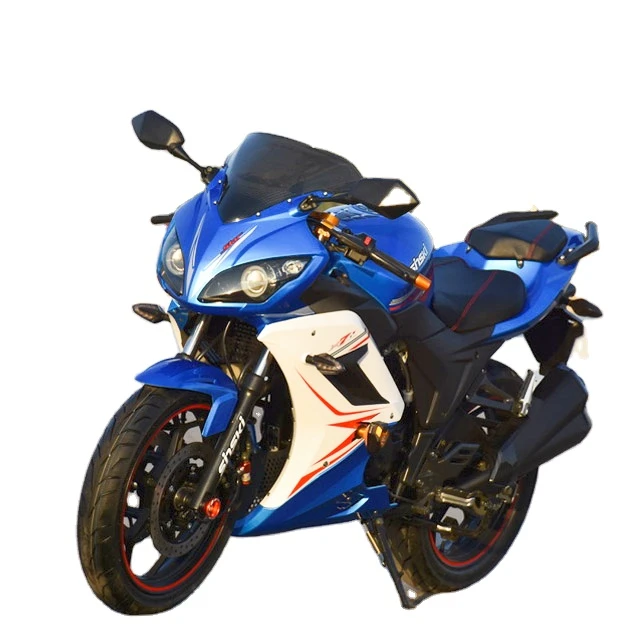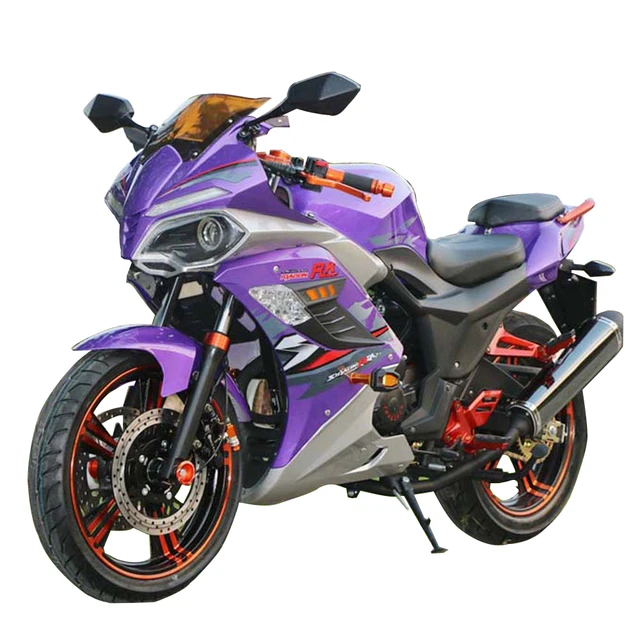In the world of motorcycles, enthusiasts and engineers continuously push the boundaries of what’s possible, often experimenting with unconventional and daring designs. One such groundbreaking motorcycle is the beast powered by a Viper engine. This extraordinary machine combines the essence of motorcycle dynamics with the brute force of a Dodge Viper’s V10 engine. How does one integrate such a colossal engine into a two-wheeled vehicle? What are the engineering marvels and challenges involved in this process? This guide delves deep into the fascinating journey of creating and understanding the motorcycle with a Viper engine.
The Genesis of the Viper Motorcycle
Understanding the origins and motivations behind this captivating machine highlights human ingenuity and engineering prowess.
Vision and inspiration
The motorcycle with a Viper engine didn’t start as a typical engineering project. It began as an audacious idea: to merge the sheer power of a Viper V10 engine with the agility of a motorcycle. The concept aimed to push the limits of motorcycle performance and engineering design, capturing the imagination of both car and bike enthusiasts.
Design and conceptualization
Initial sketches and blueprints of the motorcycle had to consider the V10 engine’s enormous size and weight. The Dodge Viper engine, known for its high output and large displacement, created the need for a custom frame and chassis designed to handle the engine’s physical and power demands. The motorcycle’s design had to balance form and function, ensuring that while performance was a priority, the bike also maintained a distinctive and appealing aesthetic.
Engineering team and collaboration
A project of this magnitude required a highly skilled and dedicated team of engineers, designers, and fabricators. Collaborations with Dodge engineers who had worked on the Viper engine were essential to understanding the intricacies of the powerplant. Additionally, motorcycle engineers contributed their expertise to effectively integrate this engine into a two-wheeled chassis.
 Technical Specifications and Performance
Technical Specifications and Performance
The technical specifications of the motorcycle with a Viper engine reveal the extent of modifications and engineering ingenuity.
Engine details
At the heart of this extraordinary motorcycle is the Dodge Viper’s 8.3-liter V10 engine. Originally designed to power a sports car, this engine produces an astounding 500 horsepower and 525 lb-ft of torque. Modifications had to be made to downsize and slightly tune the engine for motorcycle compatibility while ensuring it retained its raw power.
Frame and chassis
To accommodate the hefty V10 engine, the frame of the motorcycle had to be incredibly robust. Crafted from lightweight yet strong materials like chromoly steel, the custom frame provided the necessary strength and rigidity. The chassis design focused on balancing the weight distribution, ensuring that the motorcycle remained stable and manageable even at high speeds.
Suspension and braking
The motorcycle’s suspension system had to be designed to handle the significant weight and power output of the Viper engine. This necessitated the use of advanced suspension components, including heavy-duty forks and shocks, typically found in high-performance bikes. The braking system implemented was equally robust, featuring dual-disc brakes with premium calipers to ensure adequate stopping power.
Transmission and drivetrain
One of the most challenging aspects of integrating a Viper engine into a motorcycle was designing an appropriate transmission and drivetrain. The sheer torque generated by the V10 required a custom-built transmission capable of handling the power. Additionally, the final drive system had to ensure smooth power delivery while maintaining the thrilling performance characteristics.
Challenges in Engineering a Viper-Powered Motorcycle
Engineering a motorcycle with such an unconventional engine brings numerous challenges that require innovative solutions.
Weight management
One of the primary challenges was managing the substantial weight of the V10 engine. Strategies included using lightweight materials for the frame and other components to offset the engine’s weight. Engineers also had to ensure that the weight distribution allowed for balanced handling, preventing the motorcycle from being unwieldy.
Cooling system
The Viper engine generates significant heat, which posed a challenge for cooling in the compact confines of a motorcycle. Engineers designed a specialized cooling system, incorporating large radiators, additional cooling fans, and improved airflow mechanisms to dissipate heat effectively.
Vibration and stability
The massive power and torque of the V10 engine could cause intense vibrations, risking the structural integrity of the motorcycle and rider comfort. Engineers used advanced dampening and isolation techniques to reduce vibrations, enhancing stability and safety during high-speed rides.
Safety and control
Given the extraordinary power output, ensuring rider safety and control was paramount. This included advanced traction control systems, anti-lock braking systems (ABS), and stability control. These features worked in unison to provide a safe yet exhilarating riding experience, allowing riders to harness the Viper engine’s full potential without compromising their safety.
Unique Features and Innovations
Examining the unique features and innovations highlights the cutting-edge technology and creativity involved in this project.
Customized electronics
Handling a V10 engine’s power necessitates sophisticated electronic systems. The motorcycle features a custom-built ECU (Engine Control Unit) programmed to manage power delivery, optimize fuel efficiency, and integrate with the bike’s various electronic aids like traction control and ABS.
Aerodynamics
With such a powerful engine, maintaining aerodynamics for high-speed stability was critical. The motorcycle’s bodywork was designed to minimize drag while providing sufficient downforce to keep the bike grounded. Wind tunnel testing and computer simulations played key roles in refining the aerodynamics.
Instrumentation and interfaces
The motorcycle’s instruments and controls had to match its advanced engineering. This included a modern digital dashboard displaying vital information like speed, RPM, and engine temperature. Additionally, controls were designed to be intuitive, allowing the rider to manage the bike’s various systems seamlessly.
Sound and exhaust system
A motorcycle with a Viper engine naturally commands attention, and the exhaust system amplifies this presence. Engineers crafted a custom exhaust to not only enhance performance but also give the motorcycle a distinct and thunderous exhaust note, embodying the spirit of the Viper engine.
Experiencing the Viper-Powered Motorcycle
What can riders expect when they get on a motorcycle powered by such a formidable engine?
Ride and handling
The riding experience of a motorcycle with a Viper engine is unlike any other. The raw power and acceleration can be both exhilarating and intimidating. Riders can expect rapid acceleration, propelling them from 0 to 60 mph in mere seconds. Despite its weight and power, the bike handles well, thanks to the advanced suspension and weight distribution.
Comfort and ergonomics
Despite its aggressive performance, the motorcycle was designed with rider comfort in mind. Ergonomic seating positions, adjustable handlebars, and footpegs ensure that the rider can maintain control comfortably over varying speeds and distances. The seat is cushioned and contoured to reduce fatigue on longer rides.
Street legality and regulations
Ensuring that the motorcycle met legal regulations for street use was a complex process. Issues such as emissions, noise levels, and safety features had to comply with stringent standards. Engineers worked meticulously to ensure the motorcycle not only met these regulations but also maintained the essence of the Viper engine’s performance.
Community and enthusiast reactions
The motorcycle community has been abuzz with excitement and curiosity about this unique machine. Enthusiasts appreciate the engineering achievement and the audacity of integrating a V10 engine into a motorcycle. It has sparked discussions and admiration across various forums and gatherings, solidifying its place as a marvel in the motorcycling world.
Notable Comparisons and Alternatives
Comparing the motorcycle with a Viper engine to other high-performance bikes can provide a clearer picture of its standing in the motorcycle hierarchy.
Comparison with traditional superbikes
Traditional superbikes, such as those from brands like Ducati, Yamaha, and Kawasaki, focus on achieving a balance between power, weight, and handling. In contrast, the motorcycle with a Viper engine emphasizes raw power and unique engineering. While traditional superbikes offer refined performance and are more practical, the Viper-engine motorcycle stands out for its sheer audacity and engineering challenge.
Other unconventional motorcycles
Several other motorcycles have also made headlines for their unconventional designs and powertrains. For instance, the Dodge Tomahawk features a Viper V10 engine, much like the motorcycle discussed here, but is more concept than practical. Another example is the Boss Hoss motorcycles, which use V8 engines. These bikes push the envelope on power and design, though each brings its own set of challenges and engineering feats.
Maintenance and Practicality
Owning and maintaining such a unique motorcycle requires special considerations and planning.
Routine maintenance
The Viper engine requires meticulous care and regular maintenance to ensure peak performance. Owners must be diligent about oil changes, cooling system checks, and periodic inspections to keep the motorcycle running smoothly. Specialized technicians with knowledge of both car and motorcycle engines are often needed for maintenance and repairs.
Fuel consumption
Given the immense power of the Viper engine, fuel consumption is significantly higher than traditional motorcycles. Prospective owners must be prepared for frequent refueling stops, especially on longer rides. While this may not be a primary concern for performance enthusiasts, it’s an important consideration for practical use.
Spare parts and service
Sourcing spare parts and service can be challenging due to the custom nature of the motorcycle. Owners often rely on specialized suppliers or custom fabricators for parts and modifications. Establishing a relationship with knowledgeable mechanics who understand the unique requirements of the Viper engine and the motorcycle frame is crucial.
Conclusion:
The Legacy of the Viper Engine Motorcycle
A motorcycle viper engine stands as a testament to human creativity, engineering prowess, and the relentless pursuit of pushing boundaries in 2024. From its conception to the technical challenges and rider experiences, it represents a unique fusion of automotive and motorcycle technologies. By exploring the intricacies and achievements of this machine, we gain appreciation not just for its speed and power, but for the ingenuity and effort that made it a reality. The motorcycle with a Viper engine will undoubtedly remain an iconic symbol of extreme performance and innovative engineering in the motorcycle world.




